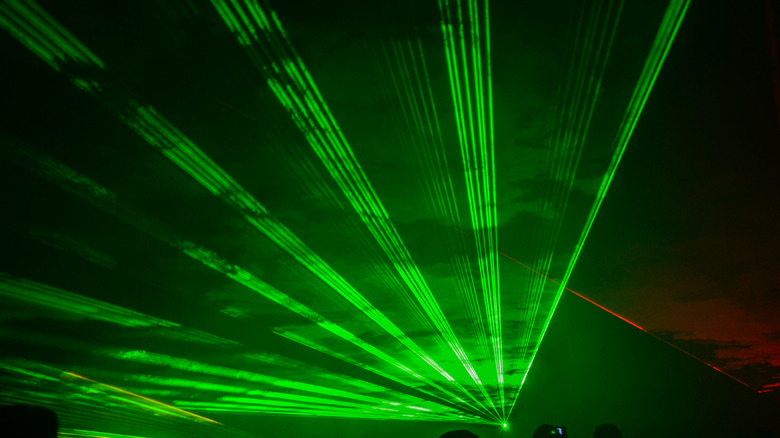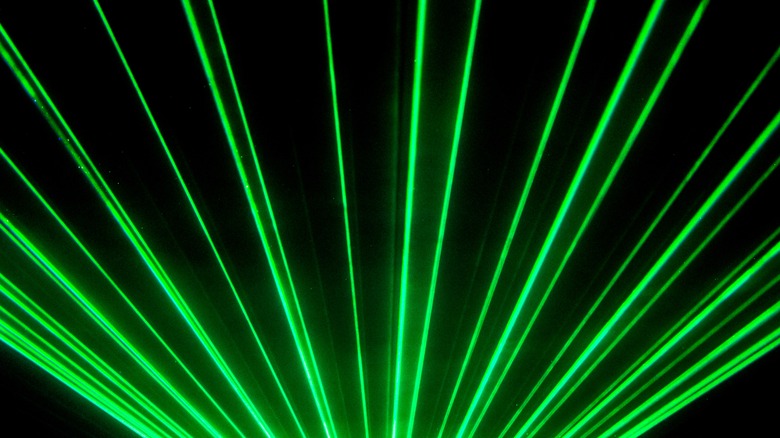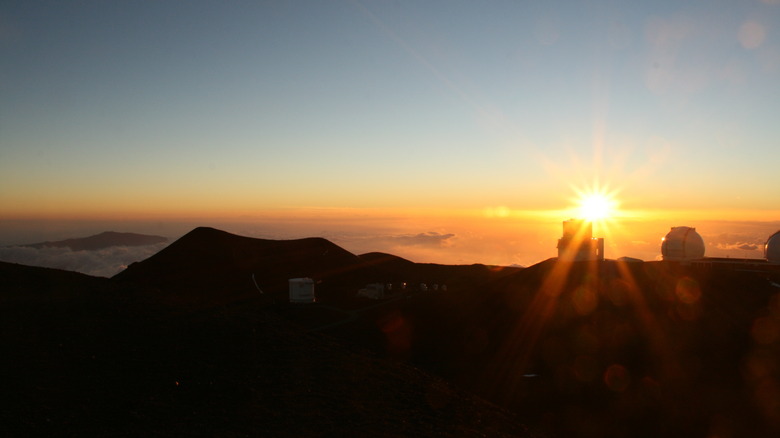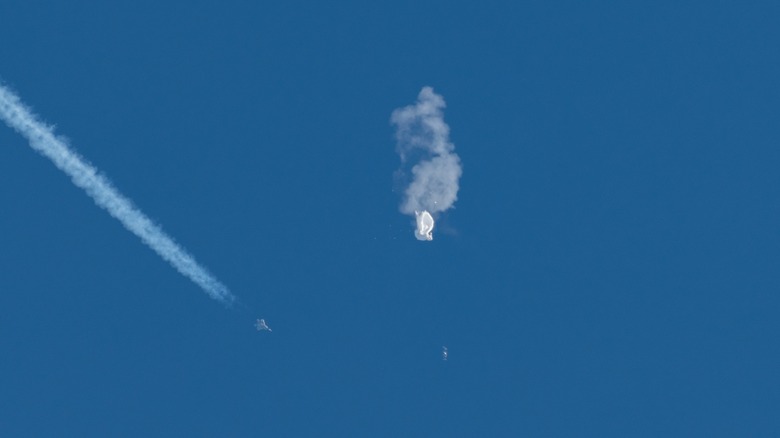The NASA Lasers That Made The Hawaiian Sky Look Like The Matrix
The Hawaiian sky is a thing of beauty, boasting a sea of world-renowned glistening stars. Stargazing is a popular pastime for locals and visitors. In fact, it is so popular that the Hawaiian Astronomical Society has been hosting stargazing parties for more than seven consecutive decades to great appeal.
People come from far and wide to take in the sights of Hawaii's crystal-clear skies, some even going so far as to drive 8,000+ feet up the side of Mount Kea, where famous observatories and off-the-beaten-path destinations abound. Recently, a new sight has been taking up space in the stretch of the sky above the blissful island, and it's unlike anything anyone has seen before.
It appears that a series of Matrix-inspired flashing neon lasers are leaving their mark on the night sky as well. The light show is so surreal that one captivated onlooker described it as "digital rain." Here's what's really making the sky look like a '90s digital download in progress.
Fluorescent green lasers created a light show over Mauna Kea
Spectators perched atop Mauna Kea — which is, incidentally, the highest point of elevation on the island — got more than they bargained for when stargazing recently. For precisely one second on January 28, 2023, lime green lasers lit up the usually starry sky, making it look more like a Matrix backdrop than an earthly star sighting experience and causing some to ponder our very existence.
Was it a glitch in the Matrix captured by cameras live? IFL Science reports that it was nothing of the sort. The green lights might have looked computerized, but they were actually caused by lasers that were shooting out of an unidentified spacecraft. The whole scene was pretty far out, even by stargazing standards. The lights flashed vertically one by one, a light show you could have missed by merely blinking. Fortunately for us, the peculiar occurrence was caught on a high-tech camera and is now available as a timelapse for the world to behold.
The lasers were filmed by the Subaru-Asahi Star camera
Live Science reports that the flashing laser beams lit up the screen of the Subaru-Asahi Star camera, a sophisticated telescope that's been situated at the top of Mount Kea for quite some time. The camera is the property of both the National Astronomical Observatory of Japan and the Asahi Shimbun News Agency.
According to IFL Science, the lasers were believed to be shooting out of NASA's ICESat-2 satellite at lightning speed. However, scientists representing the ICESat-2 ATLAS team denied this claim. Experts now have their sights set on the Chinese Daqi-1/AEMS satellite as a possible culprit for the odd activity, but this has not been officially confirmed.
It's important to note that this is not the first time the Subaru-Asahi Star camera has captured something otherworldly through its lens. IFL Science reports that in early February 2023, several red sprites resembling fiery bolts of lightning seemed to dance over Hawaii. These events are relatively brief, often lasting mere minutes or seconds. Yet they are able to be analyzed forever thanks, in part, to the high-tech camera's position.
Do the lasers have something to do with the Chinese surveillance balloons?
When the story first broke, Live Science and several other science-based news sources cited NASA's ICESat-2 satellite as the reason the starry sky was briefly streaked in neon green. However, IFL Science reports that the initial suspicion has been negated. While the NASA satellite certainly fires lime green lasers at a rate of about 10,000 pulses per second and has the ability to create a light show through the permafrost, NASA representatives say the beams did not come from their instrument.
Now, with surveillance balloons hovering above the United States and lasers shooting across the Hawaiian sky, the dissipated light show has been replaced with suspicion in the air. According to the New York Post, experts suspect the Chinese Daqi-1/AEMS satellite may have been responsible for the shooting laser beams. If found to be true, this event could exacerbate the tension between the United States and China. For now, things are still up in the air.



